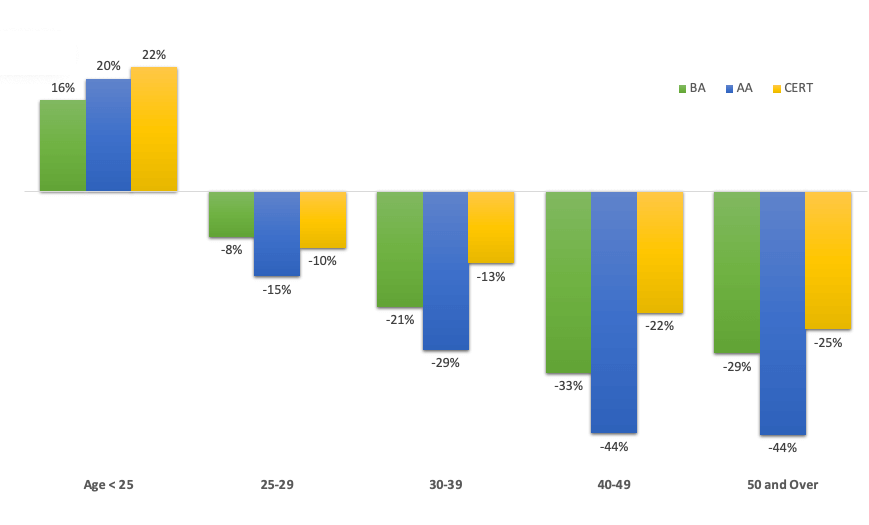- BLOG HOME
- »
- Undergraduate Degree Earners Report
- »
- Undergraduate Degree Earners Increased from 3.4 Million to 3.7 Million, According to New Research R...

Undergraduate Degree Earners Increased from 3.4 Million to 3.7 Million, According to New Research Report
7% Growth Over Past Six Years Fueled by Students Earning Their First Postsecondary Credential Before Age 25 and Graduates Earning Stacked Credentials
The number of students earning an undergraduate credential each year continued to increase from 3.4 million in 2012-13 to 3.7 million in 2018-19, representing a seven-percent growth over the past six years, according to the newly released Undergraduate Degree Earners report. As many as 77,000 recipients were added in 2018-19 over the previous year. Undergraduate credentials may include bachelor’s and associate degrees and certificates.
The steady increase was largely fueled by students earning their first postsecondary credential before age 25 (traditional college-age students) and graduates who had previously earned one. As a result, adult learners and first-time graduates decreased as a share of all undergraduate degree earners.
“These data show the growing importance of transfer degrees and stacked credentials, with insights into the types of students who are earning them today,” said Doug Shapiro, Executive Research Director. “College enrollment behaviors are changing. We want to give institutions and policymakers the tools they need to adapt to the new realities.”

Only Traditional College-Age Group Had an Increase (Percent Change in Number of First-Time Graduates Over Past Six Years Ending in 2019 by Age at Graduation).
More than one quarter of all undergraduate credentials today are awarded to students who already had one (26% or 943,000 graduates), up three percentage points from 2012-13 (see Figure 2 in the Appendix). The share of first-time graduates has decreased, approximately 0.4 percentage points each year over the last six years. The number of graduates with prior awards grew approximately six times faster than first-time graduate numbers over this period (19% versus 3.4%, as shown in Figure 1 in the Appendix).
Increasingly more students appear to earn bachelor’s over associate degrees. The number of students earning a bachelor’s degree as their first postsecondary completion increased by 8 percent, to 1.5 million, over the past six years, whereas associate degree recipient numbers decreased by 4 percent, to 770,000. Likewise, among graduates with prior awards, six out of every 10 earned a bachelor’s degree (58%). This includes 444,000 baccalaureate degree earners this year who had first completed an associate degree, representing an increase of 5.6% over last year. As a share of all bachelor’s degree recipients in 2018-19, students with prior associate degrees made up 22%.
The Undergraduate Degree Earners report series, published annually, provides a demographic and education profile for all students graduating with an undergraduate credential, which may include associate and bachelor’s degrees and certificates. In this report, we profile graduates in the 2018-19 academic year, with a focus on first-time versus non-first-time graduates, and changes in demographics and education credentials received over the last six academic years, since 2012-13.
“College enrollment behaviors are changing. We want to give institutions and policymakers the tools they need to adapt to the new realities.”
Doug Shapiro
Executive director, National Student Clearinghouse Research Center
Additional Resources:



